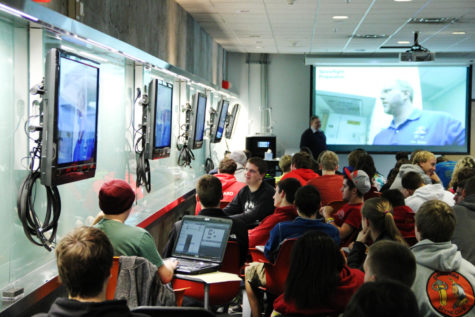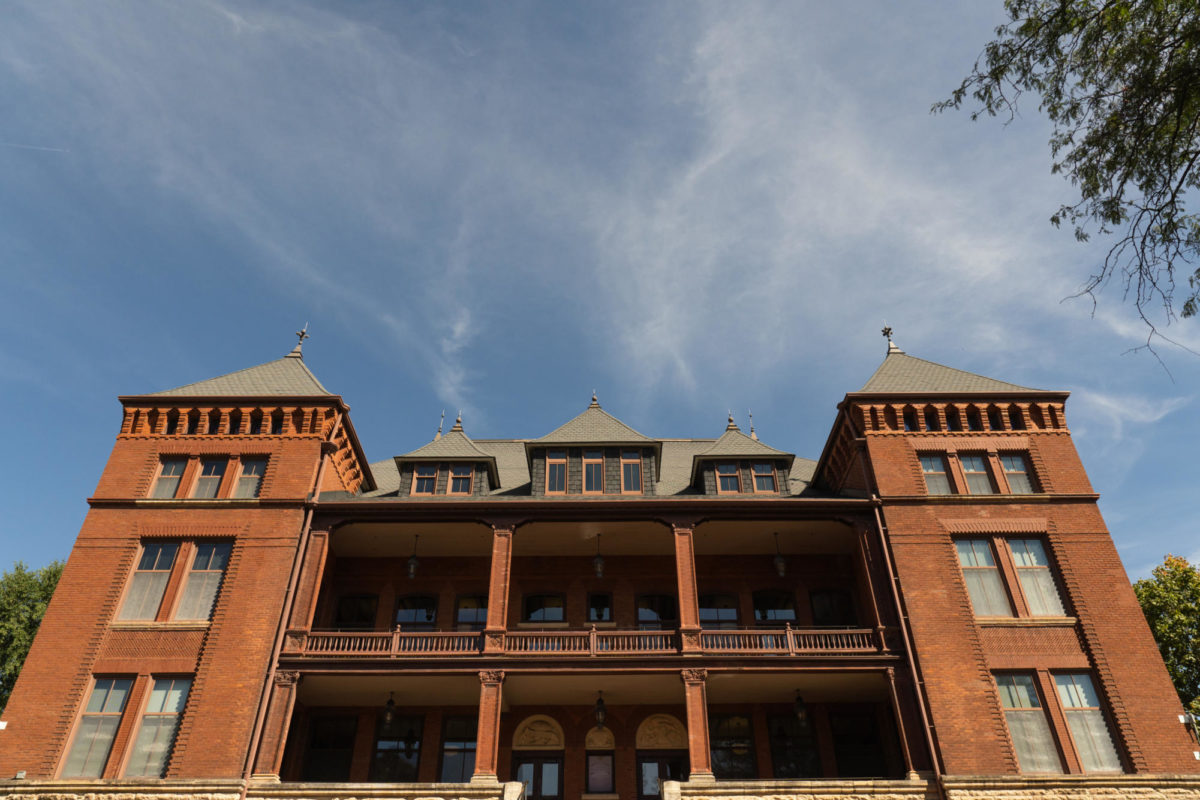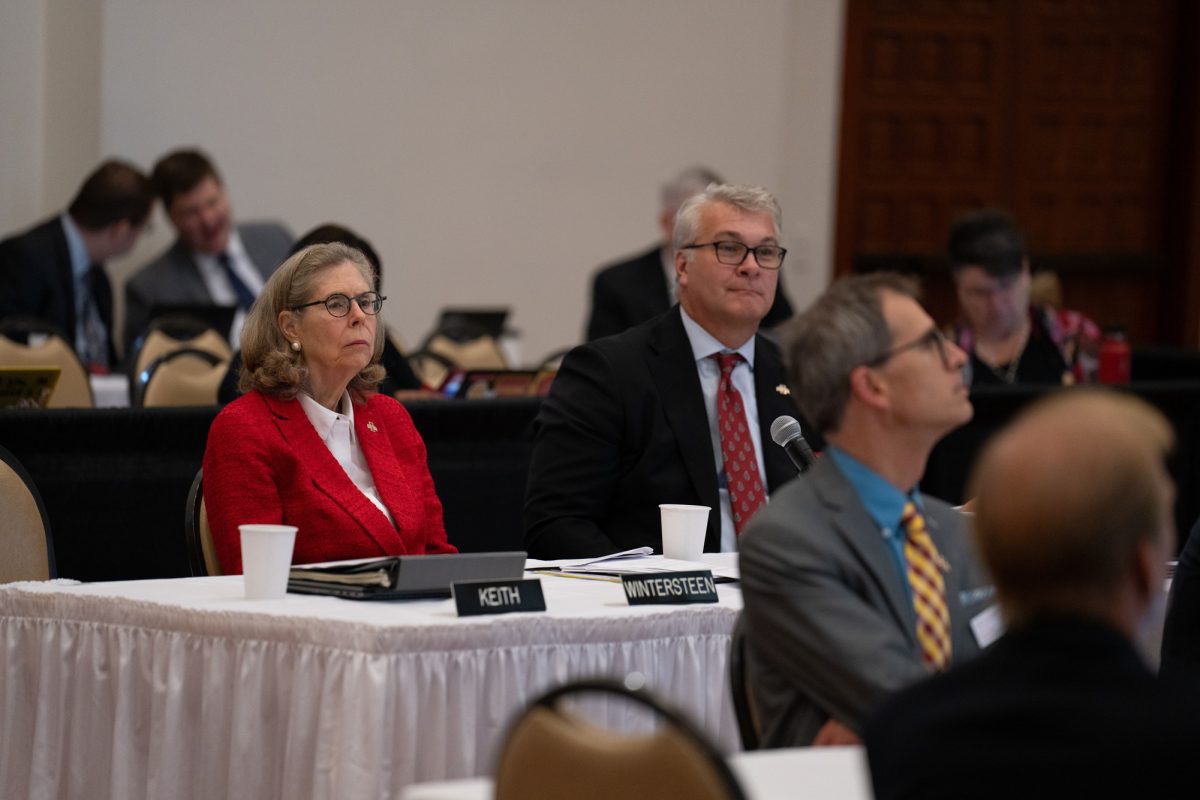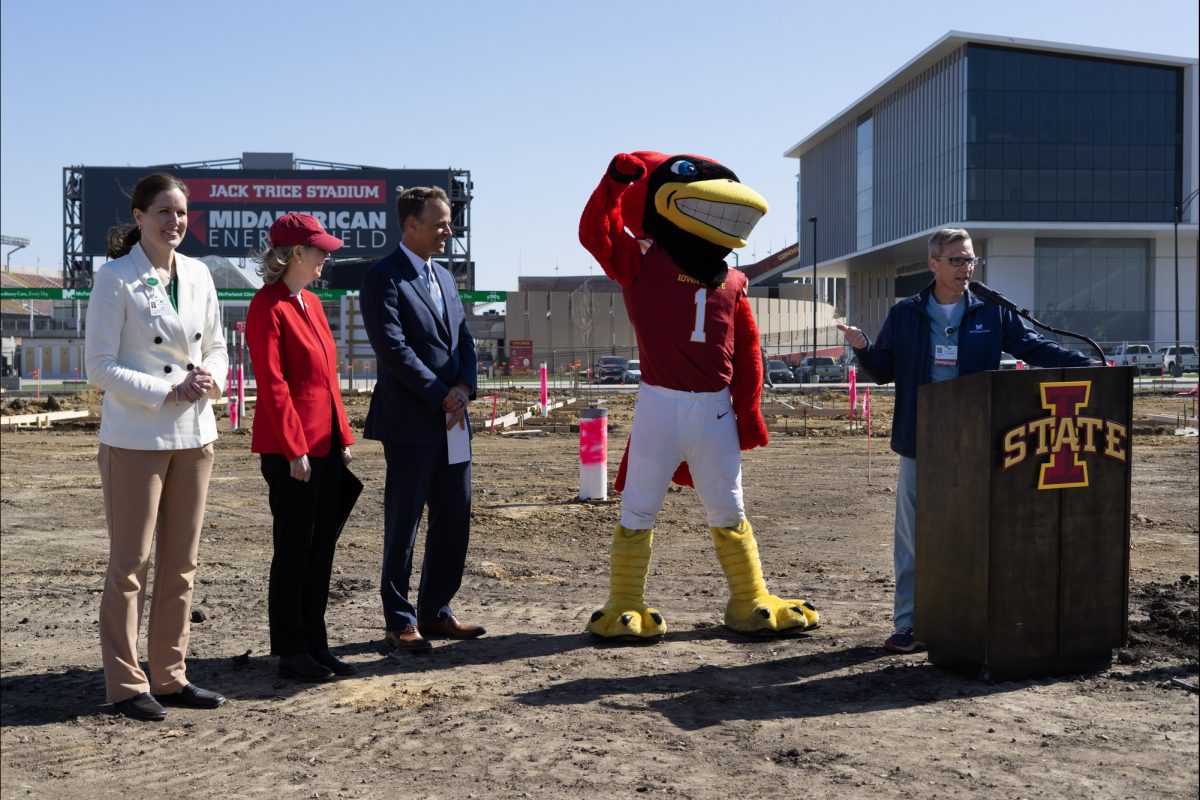The process of welcoming incoming first-year students in the Liberal Arts and Sciences open option is intricate, unique to each student and tailored to their specific needs, including events, classes, tours and advising.
There are several reasons why students choose the open option. Many students enjoy a broad discipline but are unsure about their specific interests within that field. Some students have no idea what they want to do and prefer to explore different options.
Other students want to enter a professional program after graduation but are not sure what major will get them there. There are also students who declare a major but realize they need to find something different and then switch to the open option.
With less than 7% of incoming first-year students choosing the LAS open option, “students may feel like they are settling for being undecided if they don’t know what major they want to pursue,” said Kathleen Houseman, director of enrollment management.
“But this is not true,” Houseman said. “They are coming in with intention and purpose, and Erin Valerio-Garsow’s team is wonderful for coming alongside them and helping them explore so that they can move forward and make progress.”
Valerio-Garsow is the lead adviser for LAS Open Option and pointed out that “all students are in various stages of decision-making.”
“I want students to know they are not inferior because they don’t know what they want to do,” Houseman said. “It’s fine. They’re doing something even if they don’t realize it. Being patient is being active, even though we may not feel it.”
Valerio-Garsow described the process as similar to any other academic advising. Advisers determine what each student is most interested in, try to place them in a cohort where they will see some of the same faces in class and start getting to know each other.
“It’s different when you don’t begin in a specific major, where you’ll see the same people all the time,” Valerio-Garsow said. “When you start the open option, you might not because you’ll be in classes with students from all over campus. As a result, we try to provide them with a few classes where they will be surrounded by familiar faces.”
Valerio-Garsow said her role as an adviser is to guide students who are unsure about their major and to provide pathways to help them make informed decisions.
Houseman suggested that larger universities, like Iowa State, may not have individual personal advisers. She believes that one of the program’s greatest strengths is the ability for students to come to Iowa State, meet with their personal adviser and know they are in the right place until they are ready to declare.
Valerio-Garsow and her team, according to Houseman, excel at getting students to articulate their excitement by providing a variety of experiences.

“When a student walks out of my office and they have this look on their face where they are a little more determined or proud of themselves because they’ve figured something out, that’s awesome,” Valerio-Garsow said.
Open option students are in classes across campus, so having a rotating group of people surrounding them is common, but having some consistency in who they see on a regular basis can help students understand themselves, Houseman said.
“They have a person who understands their story and can engage in meaningful conversations about what is best for them. Because they know their story, they can have different conversations with them, knowing who they truly are,” Houseman said.
Valerio-Garsow believes providing a support system for students in their first year is crucial to achieving their starting point.
Advisers also encourage students to attend a major fair, as previously reported by the Daily, and to visit various classes to gain exposure to their many options.
Carly Halstead, a first-year student who was undecided this fall and is now studying kinesiology and health, stated in an email that receiving information at the major fair was “overwhelming, but in a good way.”
“I got to talk to many advisers who gave me information and answered any questions that I had. It was extremely helpful and beneficial to pick a major and think about future careers,” Halstead stated.
Valerio-Garsow said undecided students are invited to participate in tours within each college and major, including visiting interesting classes to explore opportunities.
Advisers promote self-discovery by encouraging students to take non-major-specific classes, according to Valerio-Garsow, who said the general education courses during a student’s first year can allow them to focus on discovering what really “lights them on fire.”
“As a university of science and technology, we provide students with unique opportunities to get involved on campus and discover their passions, allowing them to learn how they best want to be a Cyclone,” Valerio-Garsow said.
Halstead did not choose her major until October, which she stated was driven by the opportunity for self-reflection.
“The main deciding factor for me was the self-reflection that I did and realizing my interest in learning about the way the body functions and moves,” Halstead stated. “Kinesiology is the field of study that fits that description perfectly.”
Valerio-Garsow, a former high school counselor, said she thinks Iowa State does an “amazing job” in executing the open option model.
“I believe that students who start here get a leg up on some people, as they get an opportunity to see a few things before they get into the real world,” Valerio-Garsow said.
Halstead stated seeing several options has provided her with more than just a major; it provided her with experience in other areas which could prove useful in the future.
“I wouldn’t change the way I did things because I was exposed to so many different career paths and major options that I wouldn’t have known about,” Halstead stated. “If I decide in the future that kinesiology isn’t for me, I have other options that I’ve learned about through the open option process.”
The idea of the open option model is the final goal, according to Houseman.
“There are a lot of pieces to get students to an end goal, and I think in open option there are just a lot of ways that we help students pull the pieces together so that they can get to the final goal,” Houseman said. “Basically, they are making themselves, finding who they were designed to be.”














